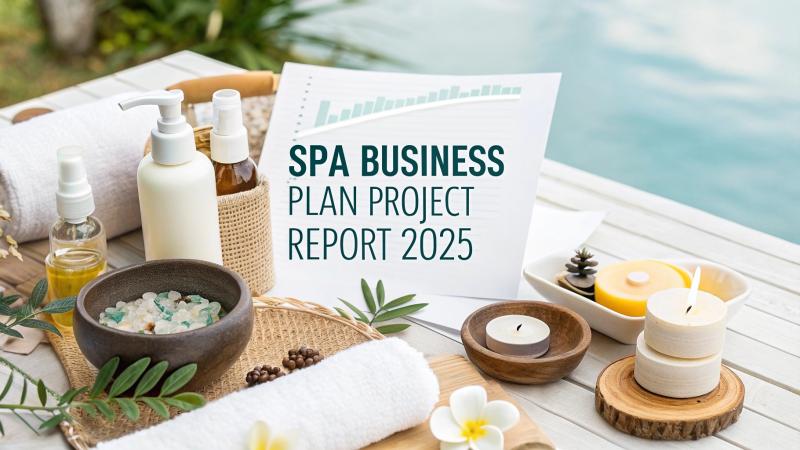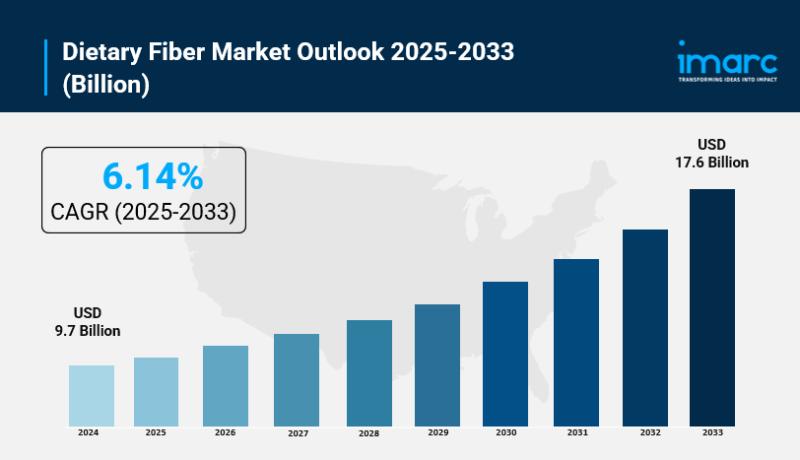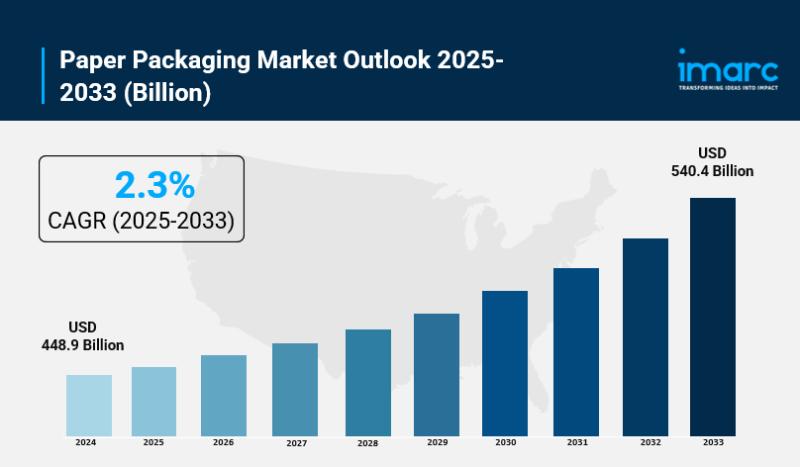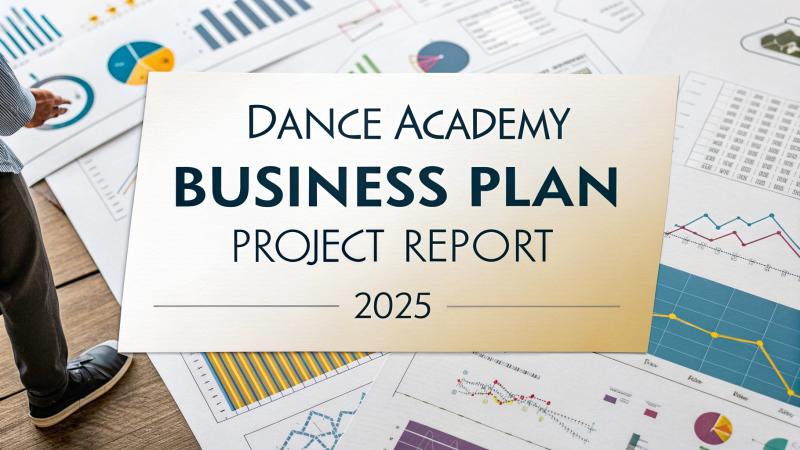Press release
Dance Academy Business Opportunities in 2025: Why Now Is the Right Time to Invest
Dance Academy Business Plan & Project Report OverviewIMARC Group's "Dance Academy Business Plan and Project Report 2025" offers a comprehensive framework for establishing a successful dance academy business. The critical areas, including market trends, investment opportunities, revenue models, and financial forecasts, are discussed in this in-depth report and are therefore useful resources to entrepreneurs, consultants and investors. Whether evaluating the viability of a new venture or streamlining an existing one, the report gives an in-depth analysis of all the ingredients that make it successful, starting with business formation and profitability over time.
What is a Dance Academy Business?
A Dance Academy is a specialized educational establishment designed to deliver comprehensive, movement-focused artistic experiences. These academies emphasize professional dance training using qualified instructors, structured curriculum, diverse dance styles, performance opportunities, choreography development, and skill-focused progression programs, catering to aspiring dancers seeking professional training and artistic expression solutions.
They offer a variety of services including classical ballet training, contemporary dance classes, hip-hop instruction, jazz dance programs, ballroom dancing lessons, cultural dance forms, choreography workshops, performance rehearsals, dance fitness classes, competitive dance training, recital productions, and personalized skill development programs for individuals committed to mastering dance as an art form.
The category encompasses professional dance studios, performing arts academies, recreational dance schools, and competitive dance training centers, each prioritizing expert instruction delivery, age-appropriate curriculum planning, skill level customization, performance showcases, dance competitions, artistic development programs, community cultural events, and comprehensive student engagement.
To achieve these goals, Dance Academies integrate state-of-the-art dance studio facilities, professional sound systems, advanced lighting equipment, mirrored studio spaces, specialized dance flooring, student management software, choreography planning tools, performance recording systems, and arts-driven marketing analytics.
Depending on their positioning, these establishments may operate as specialized ballet conservatories, multi-style dance studios, competitive dance training centers, or comprehensive performing arts institutions, delivering complete artistic dance experiences tailored to diverse age groups, skill levels, artistic aspirations, and levels of dance dedication.
Request for a Sample Report: https://www.imarcgroup.com/dance-academy-business-plan-feasibility-report/requestsample
Dance Academy Business Market Trends and Growth Drivers
The trends and drivers of a Dance Academy business are shaped by the rising interest in performing arts among children and adults, growing awareness of the physical and mental health benefits of dance, and the increasing recognition of dance as both an artistic pursuit and fitness activity. These factors, combined with a stronger focus on creative expression, cultural appreciation through movement, and character development, are fuelling demand for professional dance education services. Contributing to this shift is the expanding interest in competitive dance programs, diverse cultural dance styles, professional performance opportunities, and social media dance trends, along with the consumer preference for qualified instructors, flexible class scheduling, and convenient access to high-quality dance training within the evolving arts education ecosystem.
To meet these demands, operators are investing in advanced dance studio facilities, professional instructor recruitment, performance-focused training environments, student engagement platforms, and compliance with performing arts safety and teaching certification standards. These investments not only enhance the student experience but also strengthen business outcomes by aligning with broader trends in arts education and creative wellness.
Revenue diversification is another critical factor in building financial resilience. In addition to direct class tuition and membership fees, income streams may include performance ticket sales, competition entry fees, costume and dancewear retail, private lesson packages, choreography services, summer dance camps, birthday party packages, dance showcase productions, and professional training intensives.
Location and community engagement play a vital role in success. Academies positioned in areas with high concentrations of families with school-age children, arts-focused communities, proximity to schools and residential neighborhoods, and access to qualified dance instructors benefit from steady student enrollment and brand credibility.
At the same time, state-of-the-art studio facilities, compliance with safety protocols, and adherence to professional teaching standards ensure operational excellence and parent trust.
However, the business also faces risk factors, such as rapidly evolving dance trends and popular culture influences that can affect program relevance, intense competition from existing dance studios and performing arts schools, dependence on qualified instructor availability and retention, and seasonal enrollment fluctuations related to academic calendars and economic conditions.
A successful Dance Academy business model requires careful financial planning-including capital investment in professional studio infrastructure and performance-oriented facility spaces, procurement of sound and lighting equipment inventories, and adoption of student management and scheduling systems. It also demands skilled dance instructors, choreographers, and administrative staff, supported by effective marketing strategies to build brand awareness, foster loyalty, and establish long-term relationships with families, students, arts communities, and performing arts organizations. By delivering high-quality instruction, innovative choreography, and exceptional performance opportunities, these businesses can strengthen community arts culture while encouraging students to embrace lifelong artistic expression and creative development.
Report Coverage
The Dance Academy Business Plan and Project Report includes the following areas of focus:
• Business Model & Operations Plan
• Technical Feasibility
• Financial Feasibility
• Market Analysis
• Marketing & Sales Strategy
• Risk Assessment & Mitigation
• Licensing & Certification Requirements
The comprehensive nature of this report ensures that all aspects of the business are covered, from market trends and risk mitigation to regulatory requirements and arts-focused student acquisition strategies.
Key Elements of Dance Academy Business Setup
Business Model & Operations Plan
A solid business model is crucial to a successful venture. The report covers:
• Service Overview: A breakdown of dance class instruction, choreography development, performance training, competition preparation, recital production, private lessons, dance fitness programs, and student artistic support services offered
• Service Workflow: How each student registration, class scheduling, skill assessment, choreography assignment, performance preparation, and parent feedback process is managed
• Revenue Model: An exploration of the mechanisms driving revenue across multiple dance styles and training services
• SOPs & Service Standards: Guidelines for consistent instruction quality, safety standards, professional teaching practices, and student artistic satisfaction
This section ensures that all operational and student development aspects are clearly defined, making it easier to scale and maintain service quality.
Buy Report Now: https://www.imarcgroup.com/checkout?id=37696&method=1911
Technical Feasibility
Setting up a successful business requires proper dance and performance infrastructure planning. The report includes:
• Location Selection Criteria: Key factors to consider when choosing academy locations and target arts-focused markets
• Space & Costs: Estimations for required dance studio spaces, changing rooms, reception areas, performance rehearsal spaces, and associated costs
• Equipment & Systems: Identifying essential dance floors, mirror installations, sound systems, lighting equipment, ballet barres, and student management technology
• Studio & Facility Setup: Guidelines for creating advanced dance training facilities and performance-focused student experience areas
• Utility Requirements & Costs: Understanding the climate control, sound insulation, and utilities necessary to run dance academy operations
• Human Resources & Wages: Estimating staffing needs, roles, and compensation for dance instructors, choreographers, administrative staff, receptionists, and support personnel
This section provides practical, actionable insights into the dance and performance infrastructure needed for setting up your business, ensuring student safety and artistic excellence.
Financial Feasibility
The Dance Academy Business Plan and Project Report provides a detailed analysis of the financial landscape, including:
• Capital Investments & Operating Costs: Breakdown of initial and ongoing investments
• Revenue & Expenditure Projections: Projected income and cost estimates for the first five years
• Profit & Loss Analysis: A clear picture of expected financial outcomes
• Taxation & Depreciation: Understanding tax obligations and equipment depreciation
• ROI, NPV & Sensitivity Analysis: Comprehensive financial evaluations to assess profitability
This in-depth financial analysis supports effective decision-making and helps secure funding, making it an essential tool for evaluating the business's potential.
Market Insights & Strategy
Market Analysis
A deep dive into the dance academy market, including:
• Industry Trends & Segmentation: Identifying emerging trends and key market segments across ballet schools, contemporary dance studios, hip-hop academies, ballroom dance centers, and multi-style performing arts schools
• Regional Demand & Cost Structure: Regional variations in dance education adoption and cost factors affecting academy operations
• Competitive Landscape: An analysis of the competitive environment including established dance studio chains, independent performing arts schools, recreational dance programs, and competitive dance training facilities
Profiles of Key Players
The report provides detailed profiles of leading players in the industry, offering a valuable benchmark for new businesses. It highlights their strategies, program offerings, performance opportunities, and market positioning, helping you identify strategic opportunities and areas for differentiation.
Capital & Operational Expenditure Breakdown
The report includes a comprehensive breakdown of both capital and operational costs, helping you plan for financial success. The detailed estimates for facility development, equipment, and operating costs ensure you're well-prepared for both initial investments and ongoing expenses.
• Capital Expenditure (CapEx): Focused on studio space renovation and design, specialized dance flooring, mirror installations, sound systems, lighting equipment, ballet barres, changing room facilities, and student management technology
• Operational Expenditure (OpEx): Covers ongoing costs like instructor salaries, facility rent, utilities, marketing expenses, music licensing fees, costume and production costs, insurance, and facility maintenance
Financial projections ensure you're prepared for cost fluctuations, including adjustments for instructor compensation changes, seasonal enrollment variations, competition and recital costs, and competitive market pressures over time.
Profitability Projections
The report outlines a detailed profitability analysis over the first five years of operations, including projections for:
• Total revenue from class tuition, performance productions, competition fees, private lessons, and retail sales, expenditure breakdown, gross profit, and net profit
• Profit margins for each revenue stream and year of operation
• Revenue per student projections and enrollment growth estimates
These projections offer a clear picture of the expected financial performance and profitability of the business, allowing for better planning and informed decision-making.
Request For Customization: https://www.imarcgroup.com/request?type=report&id=37696&flag=E
Our expertise includes:
• Market Entry and Expansion Strategy
• Feasibility Studies and Business Planning
• Company Incorporation and Performing Arts Service Setup Support
• Regulatory and Licensing Navigation
• Competitive Analysis and Benchmarking
• Industry Partnership Development
• Branding, Marketing, and Arts-Focused Student Strategy
About Us
IMARC Group is a leading global market research and management consulting firm. We specialize in helping organizations identify opportunities, mitigate risks, and create impactful business strategies.
Contact Us:
IMARC Group
134 N 4th St. Brooklyn, NY 11249, USA
Email: sales@imarcgroup.com
Tel No:(D) +91 120 433 0800
United States: (+1-201971-6302)
This release was published on openPR.
Permanent link to this press release:
Copy
Please set a link in the press area of your homepage to this press release on openPR. openPR disclaims liability for any content contained in this release.
You can edit or delete your press release Dance Academy Business Opportunities in 2025: Why Now Is the Right Time to Invest here
News-ID: 4225601 • Views: …
More Releases from IMARC Group

Spa Business Startup Costs and Profit Margins in 2025 Explained
Spa Business Plan & Project Report Overview
IMARC Group's "Spa Business Plan and Project Report 2025" offers a comprehensive framework for establishing a successful spa business. The critical areas, including market trends, investment opportunities, revenue models, and financial forecasts, are discussed in this in-depth report and are therefore useful resources to entrepreneurs, consultants and investors. Whether evaluating the viability of a new venture or streamlining an existing one, the report gives…

Waffle Fries Manufacturing Plant Project Report 2025
Setting up a waffle fries manufacturing facility necessitates a detailed market analysis alongside granular insights into various operational aspects, including unit processes, raw material procurement, utility provisions, infrastructure setup, machinery and technology specifications, workforce planning, logistics, and financial considerations.
IMARC Group's report titled "Waffle Fries Manufacturing Cost Analysis Report 2025: Industry Trends, Plant Setup, Machinery, Raw Materials, Investment Opportunities, Cost and Revenue" offers a comprehensive guide for establishing a waffle fries…

Dietary Fiber Market Size, Trends, Key Players, Latest Insights and Forecast 202 …
IMARC Group, a leading market research company, has recently released a report titled "Dietary Fiber Market Size, Share, Trends and Forecast by Type, Source, Application, and Region, 2025-2033." The study provides a detailed analysis of the industry, including the global dietary fiber market size, trends, share and growth forecast. The report also includes competitor and regional analysis and highlights the latest advancements in the market.
Dietary Fiber Market Highlights:
• Dietary Fiber Market…

Paper Packaging Market 2025: Size, Share, Demand by Regions, Analysis and Foreca …
IMARC Group, a leading market research company, has recently released a report titled "Paper Packaging Market Size, Share, Trends and Forecast by Product Type, Grade, Packaging Level, End Use Industry, and Region, 2025-2033." The study provides a detailed analysis of the industry, including the global paper packaging market share, size, trends, and growth forecast. The report also includes competitor and regional analysis and highlights the latest advancements in the market.
Paper…
More Releases for Dance
ADHD Awareness Month: Dance Academy Founder Shares How Dance Helps Manage ADHD
This ADHD Awareness Month, Nix Academy - an up and coming dance and performing arts school - is highlighting the powerful impact of dance on managing ADHD symptoms. Founded by Nicky Rowe, who herself has ADHD, the academy has become a beacon of inclusivity, with around 40% of its students identifying as neurodiverse.
"Dance has been my lifeline in managing ADHD," says Nicky Rowe, Founder and Principal Teacher at Nix Academy.…
Ashley Paul's Dance Anthem "Dance U Gotta" Takes Over Charts and Pride Stages
Ashley Paul is making waves once again with her latest dance track, "Dance U Gotta," co-written with Luv Foundation UK and Lucas Marx. A partial rework of the original '90s track "Euro Friendly" by the infamous Bootleg Boys, it has become a sensation across Australia and beyond. The song recently spent three weeks on Australia's top chart, The MAI 15+ , and is now at #1 for two consecutive weeks,…
Dance Studio Management Software Market Will Hit Big Revenues In Future | Wellne …
Latest Study on Industrial Growth of Dance Studio Management Software Market 2023-2028. A detailed study accumulated to offer Latest insights about acute features of the Dance Studio Management Software market. The report contains different market predictions related to revenue size, production, CAGR, Consumption, gross margin, price, and other substantial factors. While emphasizing the key driving and restraining forces for this market, the report also offers a complete study of the…
Dance Class Management Software Market Size, Share, Price, Trends, Growth, Analy …
The Dance Class Management Software market research report is proficient and top to bottom research by specialists on the current state of the industry. This statistical surveying report gives the most up to date industry information and industry future patterns, enabling you to distinguish the items and end clients driving income development and benefit. It centres around the real drivers and restrictions for the key players and present challenge status…
Dance Studio Software Market Report 2021 | Recent PDF Report | Future Demand Str …
The study uses effective ways for acquiring and synthesizing crucial facts, information, and data from primary and secondary sources to bring readers up to date on the Dance Studio Software industry. This global research study provides favorable market analytical counsel and investment suggestions in addition to significant estimates and projections. The study looks at the entire dynamism of the industry, including prospects, demand drivers, and roadblocks within the worldwide company,…
Global Dance Studio Software Market: Top Players - Tula, Zen Planner, Compu Danc …
Latest industry research report on: Global Dance Studio Software Market | Industry Size, Share, Research, Reviews, Analysis, Strategies, Demand, Growth, Segmentation, Parameters, Forecasts
Request For Sample Report @https://www.marketresearchreports.biz/sample/sample/1199944
This report studies the global Dance Studio Software market, analyzes and researches the Dance Studio Software development status and forecast in United States, EU, Japan, China, India and Southeast Asia. This report focuses on the top players in global market, like
DanceStudio-Pro
MINDBODY
Acuity Scheduling
Tula
Zen Planner
Compu Dance
Dance…
